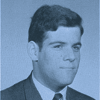Ira Berkower – 50th Reunion Essay
Ira Berkower
 3113 Dogwood St., NW
3113 Dogwood St., NW
Washington, DC 20015
ira.berkower@fda.hhs.gov
202 431-1212
Spouse(s): Jackie S. Levinson Aug. 6, 1972
Child(ren): Risa, Ariel, Simone
Education: Albert Einstein College of Med, MD/PhD 1975
National Service: Captain, US Public Health Service 83-03
Career: Immunologist working on monoclonal antibodies and vaccines
Avocations: Family, active at Adas Israel Congregation
College: Jonathan Edwards
Innovation:
As a chemistry major at Yale, I learned about recent advances in chemistry. But I was also exposed to exciting new fields opening up in biological chemistry and molecular biology. I got a PhD in molecular biology. Since then, I have seen how fundamental discoveries of that era have led to the products of biotechnology, such as 30 antiviral drugs that are in wide use today.
I learned that one path to success in science is to open up a new area of research and populate it with discoveries. My work has focused on vaccines against HIV and other pathogens. Of the two general types of vaccines, I followed the Sabin approach, which uses a live attenuated viral strain that grows well enough to immunize but has lost the ability to cause disease. Our innovation is to piggyback a foreign gene into the genome of a previously attenuated live vaccine strain against rubella (German measles). Each time the rubella vector infects a cell, it expresses its own genes plus the inserted gene. By choosing an insert from HIV, we can elicit antibodies and T cells specific for HIV. Rubella vectors can infect rhesus monkeys, where they overlap with SIV (monkey AIDS). This allows us to immunize with the vector and then measure protection against a live viral challenge.
Currently available antiretroviral drug therapy (ART) can fully suppress HIV infection in virtually all cases. But they cannot cure the infection. Drug withdrawal is almost always followed by viral rebound within four to six weeks. The problem appears to be two pools of virus in the host: the active replicating pool is controlled by ART drugs, but the latent viral reservoir persists. When drug is stopped, the latent reservoir reseeds the active infection. We have tested rubella-SIV vectors as immunotherapy, in combination with ART drugs to treat both viral pools at the same time. Among the control group receiving ART alone, three out of four animals had a viral rebound when ART was withdrawn. But only 1 out of four animals receiving vaccine plus ART had a viral rebound. The other three macaques remain virus free after one and a third years off drugs. It appears that combined ART plus immunotherapy can control both pools and prevent viral rebound.
Clearly, we have a lot more work to do. If successful, this approach could help the 180,000 children born with HIV infection each year, mainly in sub–Saharan Africa. If treated early, these children are an ideal target population for immunotherapy, since their HIV viral reservoir is small, their immune system is undamaged, and they respond well to rubella-based vaccine.
Persuasion:
Science is a tool of discovery and persuasion. As an FDA reviewer, I can be persuaded by lab experiments and clinical trials, particularly when a new drug takes people from the sick category and moves them into “cured.” As an experimental scientist, I am trying to find the answers regarding immunotherapy, including: how well does SIV infection in monkeys predict the outcome of HIV infection in man, and can live viral vectors achieve the level and type of immunity needed for protection?
If the above is blank, no 50th reunion essay was submitted.
